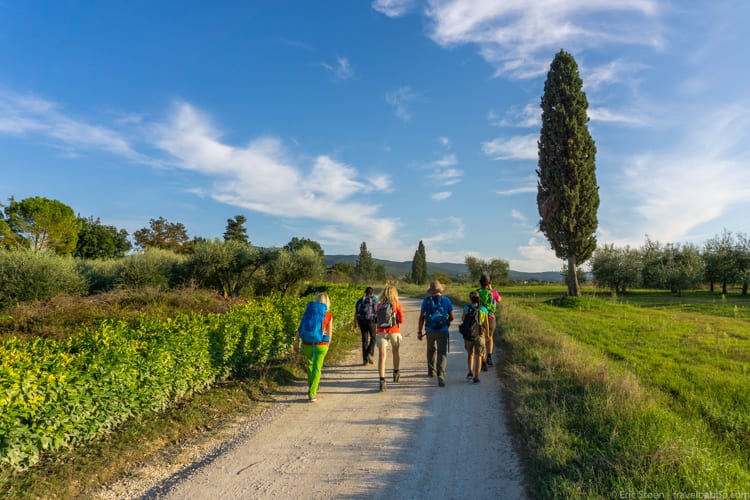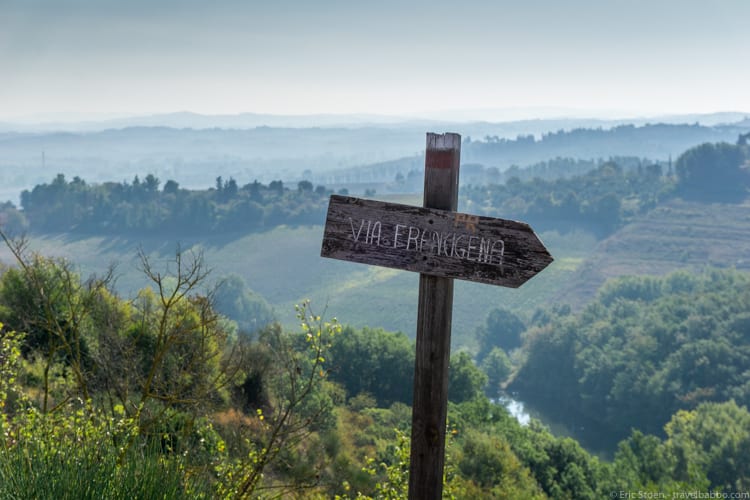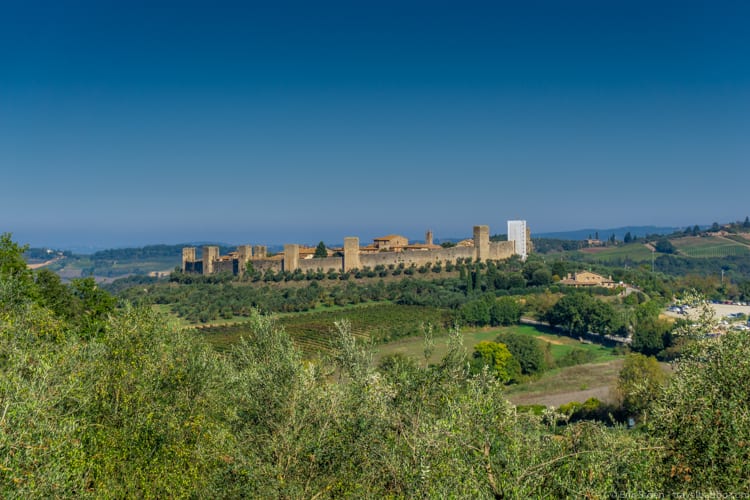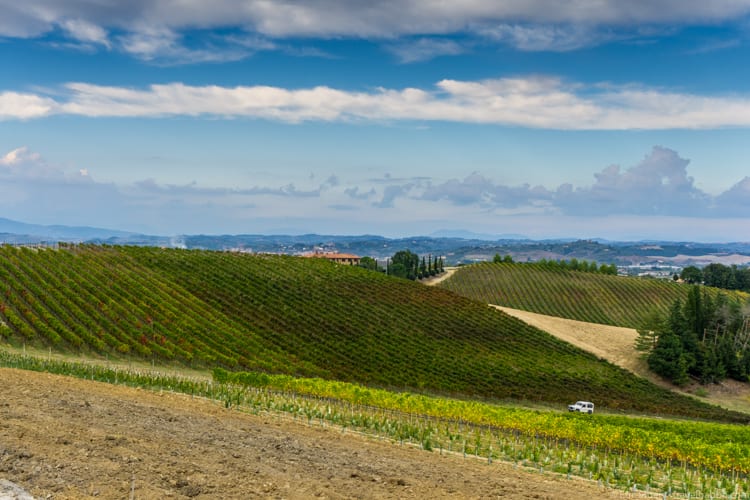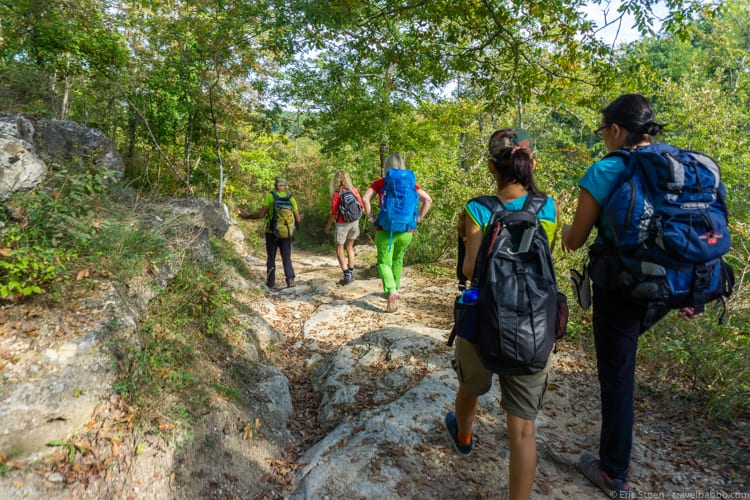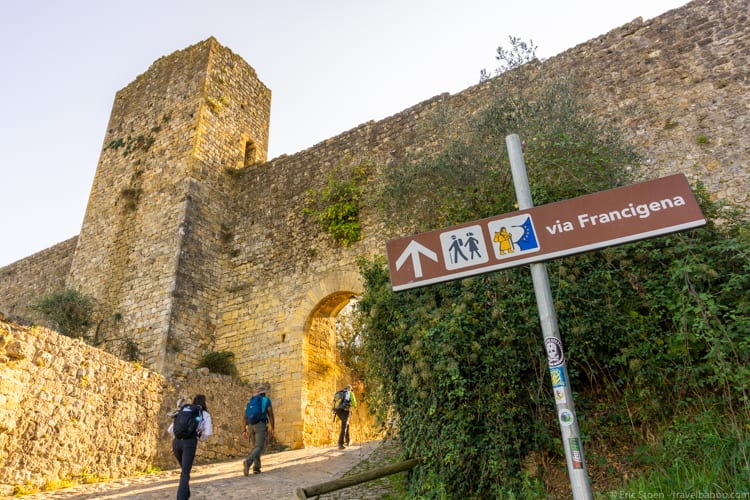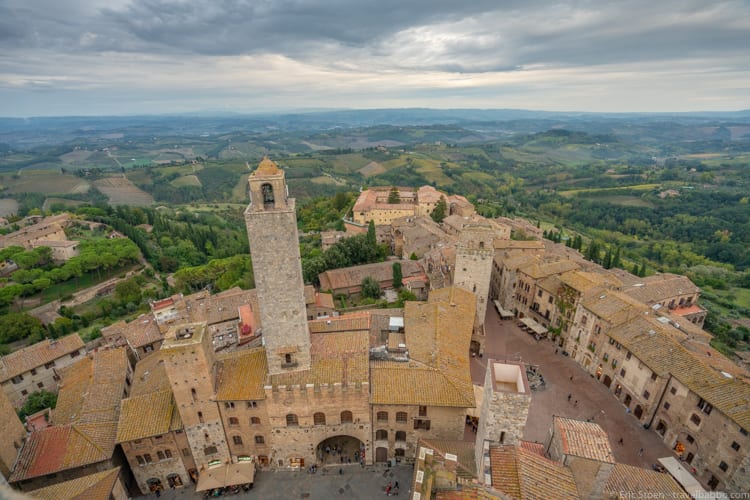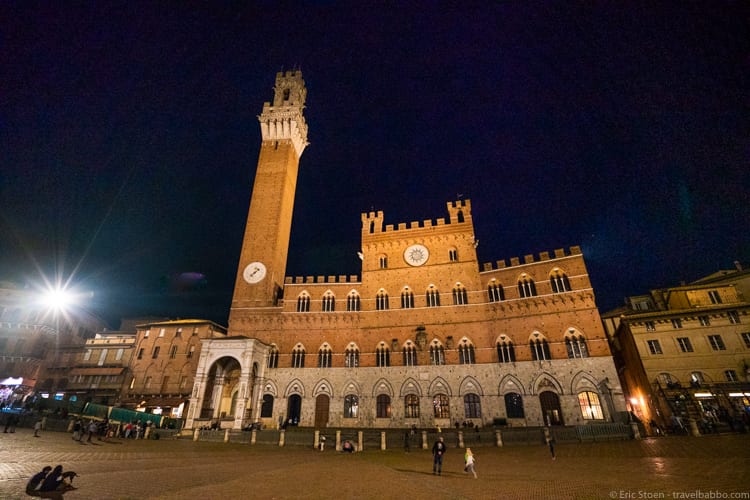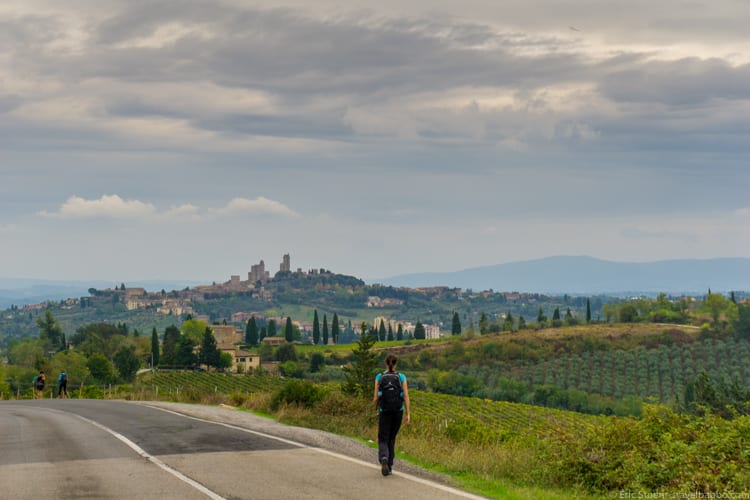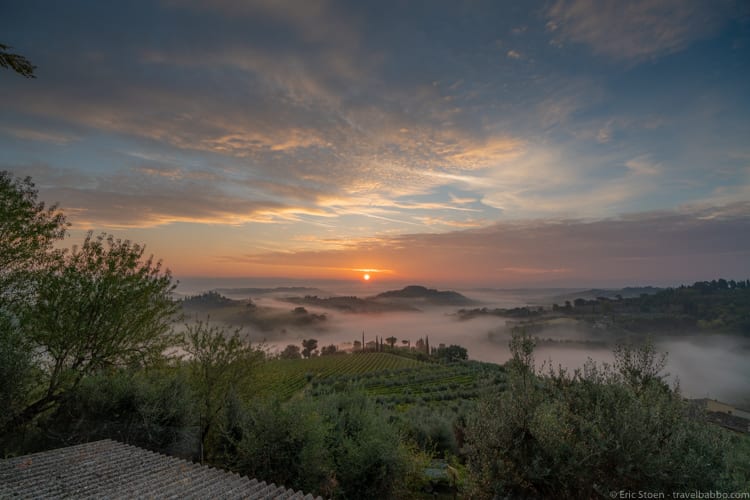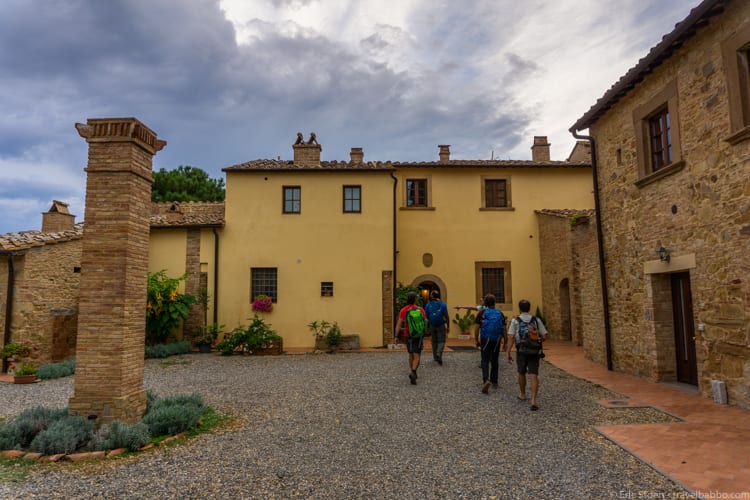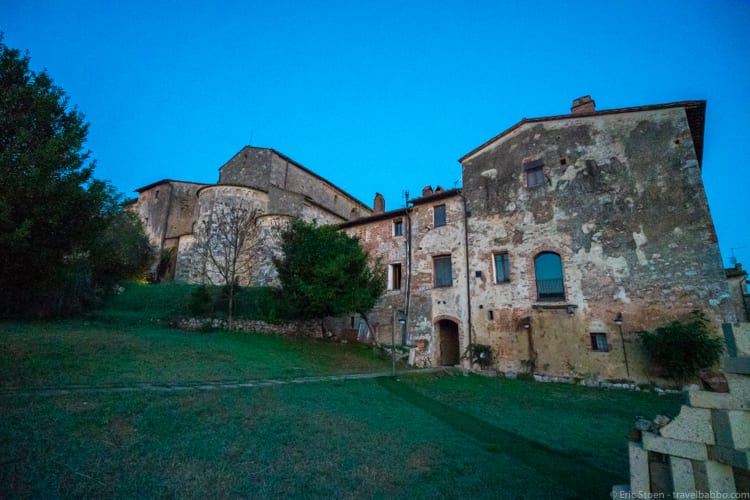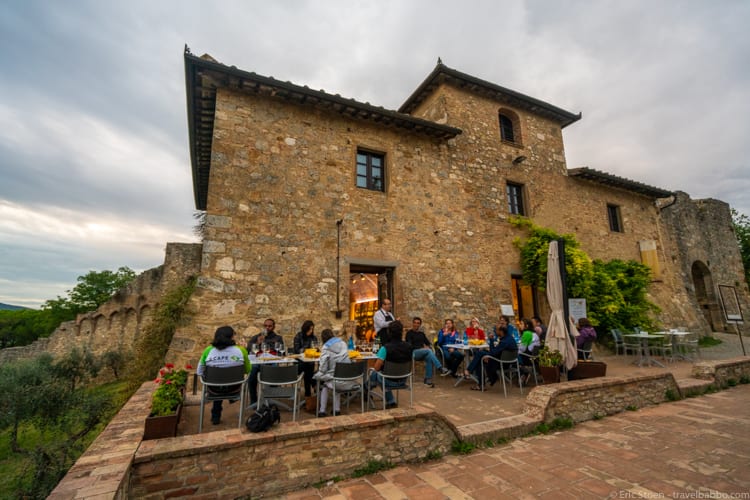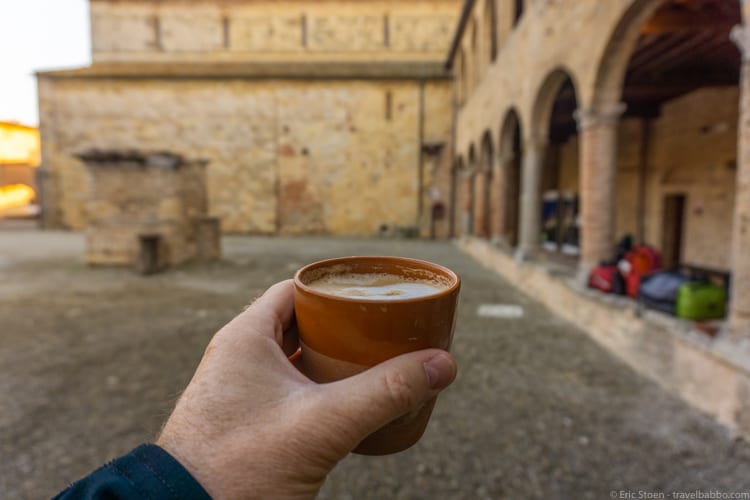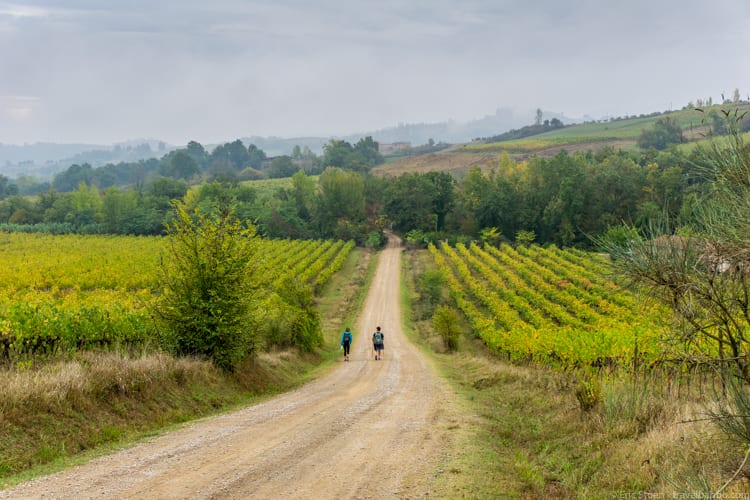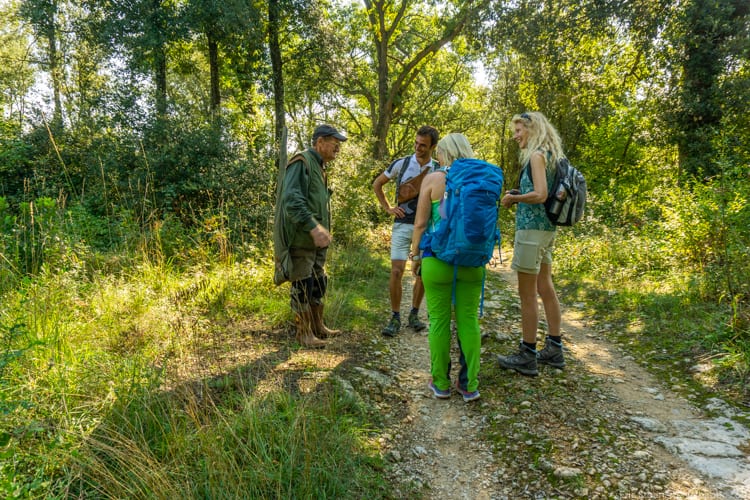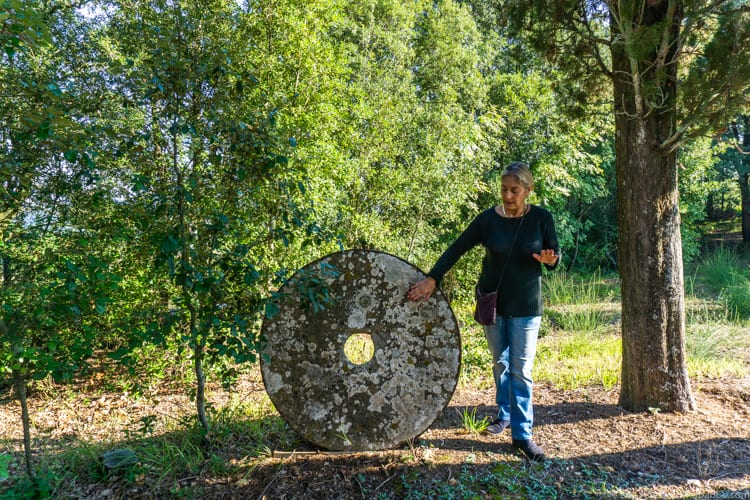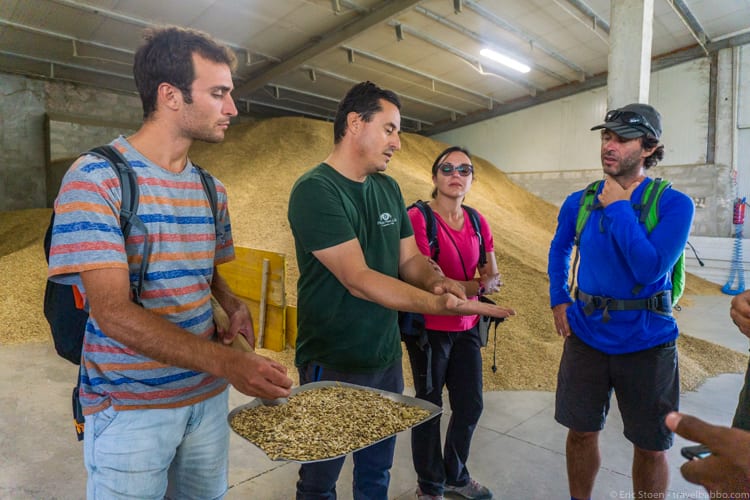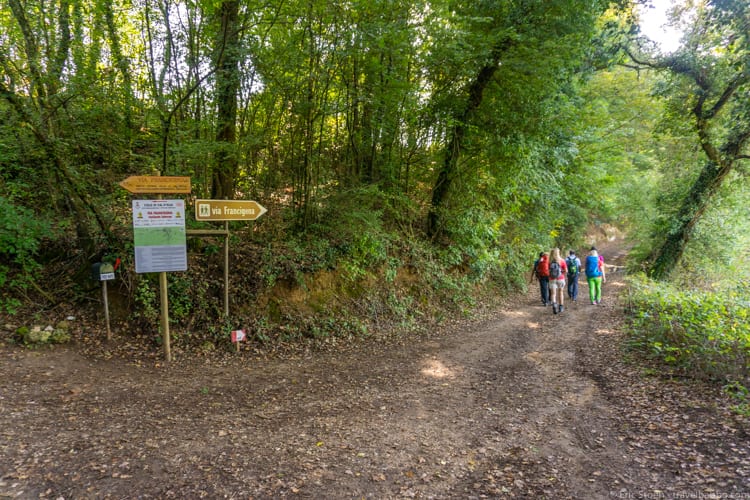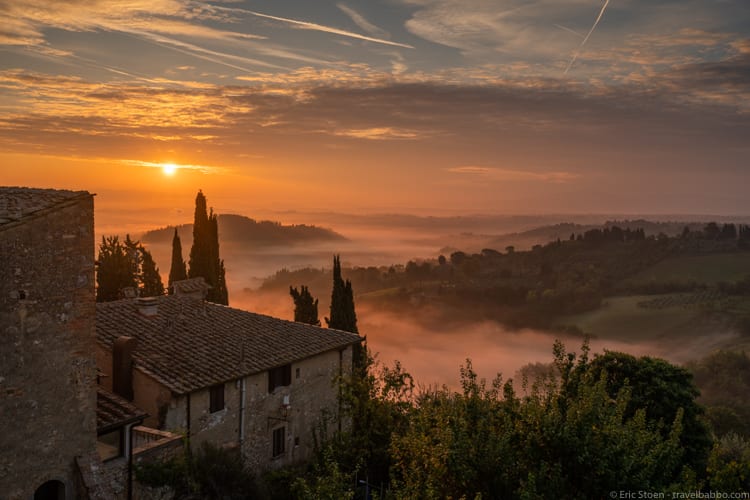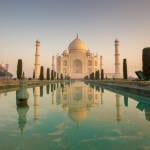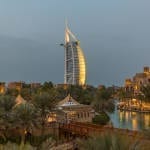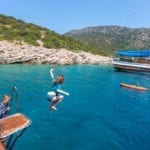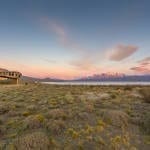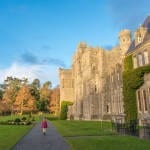The Via Francigena
If you haven’t heard of the Via Francigena, you’re not alone. The pilgrimage path dates to the 9th century and connects the Canterbury Cathedral in England and the Vatican in Rome, but pilgrimages have been declining since the Middle Ages, and the path is now overshadowed by Spain’s Camino de Santiago.
Hiking the entire route today (with a ferry across the English Channel) would take roughly 80 days, averaging 20km or so a day. I didn’t have that much time. But I loved the idea of hiking a portion of the path, so I went with a 90km section through Tuscany (my favorite place in the world) over 5 days. I traveled with S-Cape Travel, which sent along several guides, and 11 fellow pilgrims from Canada, Norway, Sweden, Spain, Australia, Japan, Brazil, India and Jordan. It was an amazing, interesting, and hilarious group, the scenery and terrain were ever-changing, and I never got (too) tired. It couldn’t have been a better hike.
Sections of the Via Francigena through Tuscany
We started in San Miniato and traveled to Buonconvento – a slightly modified version of S-Cape’s Best of the Via Francigena itinerary. Our exact routing was:
- Day One: Transfer from Montecatini to San Miniato and hike to Gambassi Terme (listed at 19km, my iPhone said that I walked 20.6km including town exploration)
- Day Two: Hike from Gambassi to San Gimignano (13.5km / 18.3km)
- Day Three: Transfer from San Gimignano a short distance to La Torraccia di Chiusi and hike to Abbadia a Isola (21.3km / 20.7km)
- Day Four: Hike from Abbadia a Isola (via Monteriggioni) to San Leonardo al Lago and transfer to Siena (16km / 18.3km)
- Day Five: Transfer to Lucigniano d’Arbia and hike from Lucigniano to Buonconvento (13km / 13.4km)
The total distance over five days was 91.3km, or 56.7 miles. My Health app says that I walked 142,000 steps. I can confidently say that I’ve never walked that much in five days before!
The Terrain
The entire hike could be classified as rolling hills. There were no serious uphills or downhills. We walked on dirt paths, on dirt roads, through vineyards and forests, on streets, and through towns. We crossed a couple streams, but didn’t get wet.
The hike was pretty but not overwhelmingly beautiful or photogenic. In mid-October the grapes are gone from the vines and the fields are empty of their sunflowers, corn, and grains. We walked along mostly clay/dirt fields. And the leaves hadn’t changed yet. The upside to this less-beautiful time of year? The weather. It was in the mid-70s (24c or so) every day, with no rain.
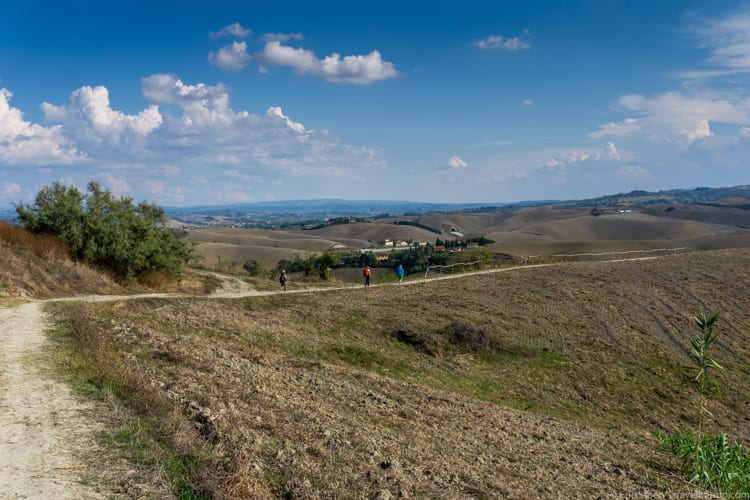
The Towns
I loved walking through the Tuscan towns along the path. These towns have all been there long before there were cars. They were meant to be arrived at on foot. Favorites were Gambassi Terme, Monteriggioni, San Gimignano and Siena.
San Gimignano was particularly fun. I’ve taken several day trips to the town before, but they had the negatives of day trips anywhere else: you arrive in the late morning along with a lot of other tourists, you’re there at the hottest time of day, everything is crowded, and you’re really only seeing the city center as well as the area from the parking lot to the city. Walking from Gambassi, though, we saw the towers of San Gimignano far before we reached them, just as pilgrims would have done a thousand years ago (except with far less fear of robbery and disease). It was particularly satisfying to walk the last kilometer or so and enter the city gates – all without having to find a parking place! And as with Florence, Rome and Venice, San Gimignano is best late at night and early in the morning. I headed out from our hotel well before sunrise and watched the sun come up from a great vantage point in a random farmhouse driveway outside of the city. One of my favorite sunrises ever!
Where We Stayed
Historically pilgrims on the Via Francigena have overnighted at abbeys and monasteries. We stayed true to that – partially. Our first night in Gambassi we stayed at the Pilgrim Hostel Sigerico, a 13th century church. The next night we were at a 3-star amazingly-located hotel in San Gimignano, the Hotel La Cisterna. Night three had us returning to the pilgrim path, with a stay at Ostello Contessa Ava, a 1000-year-old abbey. In Siena we were at the 3-star Hotel Italia, roughly 1 km from the city center.
Where We Ate
Every single lunch and dinner was amazing. We needed to walk 91.3km just to partially work off the food and wine! Most lunches were picnic-style, with bread, meats, cheeses, olives, and wine. Our only non-picnic lunches were at Punto Sosta Francigena near Monteriggioni, where Marcello provides food and wine to all pilgrims with nothing expected in return (we paid though), and Fattoria Pieve a Salti near Buonconvento, with bizarrely good spelt soup, cacio e pepe, and fagioli (white beans). Dinner highlights included La Torre in Montecatini at the start of our trip, Osteria delle Catene in San Gimignano, Futura Osteria in Abbadia a Isola, and Il Pomodorino in Siena. We also had a fun Vernaccia tasting at La Rocca in San Gimignano.
Breakfasts were all at our hotels/hostels. They were fairly simple – cereal and bread and maybe a little fruit. A special thank you to the Ostello Contessa Ava, where a lovely woman made us all the cappuccino and espresso we wanted!
Packing List
S-Cape Travel transported our bags from stop to stop, which made things far, far easier. For a five-day hike you really just need:
- One pair of hiking pants
- One pair of hiking shorts
- Synthetic short-sleeve shirts
- Good walking shoes (make sure you’ve worn them in a little first)
- A change of clothes for evenings (jeans, a different pair of shoes)
- Merino wool socks and synthetic underwear
- Rain gear just in case
- A hat and sunscreen
- A sweatshirt/fleece for evenings and cold mornings
- Hiking poles (optional, but I used mine a few times)
- A daypack
- Water bottles or a Camelback
- Snacks (I took 20 granola bars but only ate two)
- A camera and/or phone with a power bank
- Shampoo, soap and a towel for the hostels
I got one blister during the hike and blister wool came in very handy.
The Highlights
The earliest documentation of the Via Francigena was by Sigeric, the Archbishop of Canterbury, who traveled to Rome in 990AD to be ordained by Pope John XV and documented his journey back to England. Historically pilgrims made the journey to become closer to God, ending in Rome or even continuing on to Jerusalem. I had no religious reason for making a pilgrimage, and I didn’t have any spiritual revelations during my walk. But I thoroughly enjoyed getting outdoors for five days, and I made a lot of new friends. I also loved seeing Tuscany in a new way. Per my earlier comment, arriving into Tuscan hilltop towns on foot is far more satisfying than arriving by car.
Other things that stand out in my mind as highlights:
- The amazing people we met along the way, from other pilgrims to priests to cyclists to wild boar hunters with their truffle-sniffing dogs.
- Torraccia di Chiusi near San Gimignano, where we were welcomed with coffee and snacks. The farm (on the site of an Etruscan temple) would be an excellent place to base for a week of Tuscan exploration.
- A tour of Fattoria Pieve a Salti, where Barilla, Ferraro and others get the grain for their pastas and cereals.
- Just knowing that pilgrims have been walking on this same path for over 1,000 years. And going back even farther, you’ll see seashells along the path, and it’s been millions of years since Italy was under water!
Age Recommendations
This was a fairly easy walk, although my legs (especially my calves) were very tired after 21km on day three. I wouldn’t have done this exact hike with my kids (8, 11, 12), simply because they’re not major hikers and likely would have complained, but I think they’d be good with shorter stretches. Our group included people from 30 to maybe 60. And one of our guides for two days, Julia, is blind, and she was amazing on the hike, navigating by listening to our footsteps. A true inspiration.
Where do I sign up for another 100km?
Other Links
A good article from the NY Times on the Via Francigena through Tuscany: https://www.nytimes.com/2016/09/11/travel/via-francigena-tuscany.html
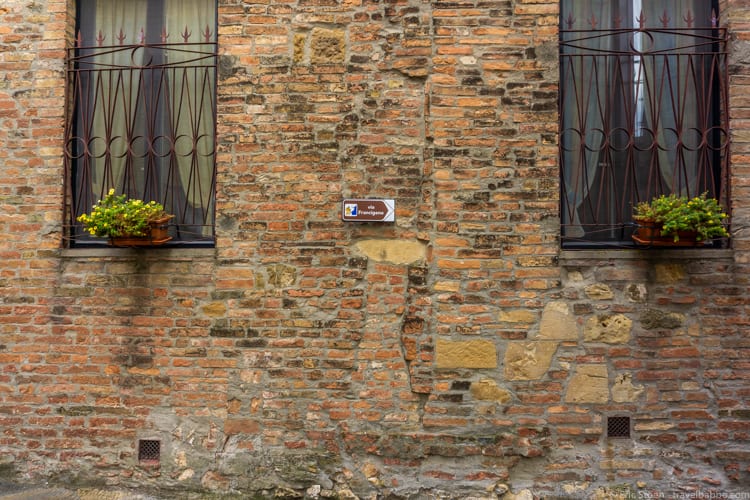
Have you hiked a pilgrimage path before? Where did you go? Or where would you want to travel?
Note: This trip was included in my registration fee for the Adventure Travel World Summit. There were 26 Pre-Summit-Adventures to choose from. I chose well!


